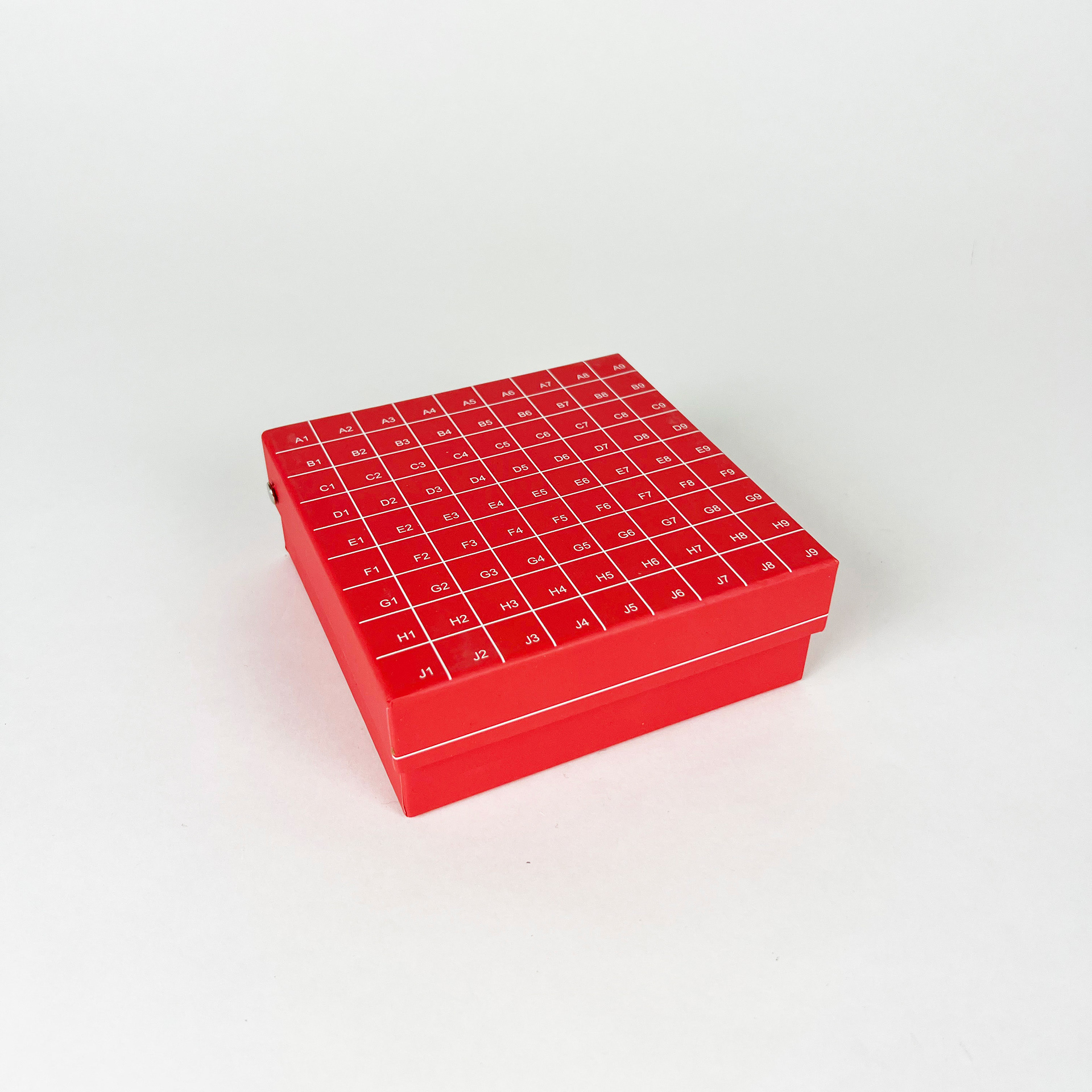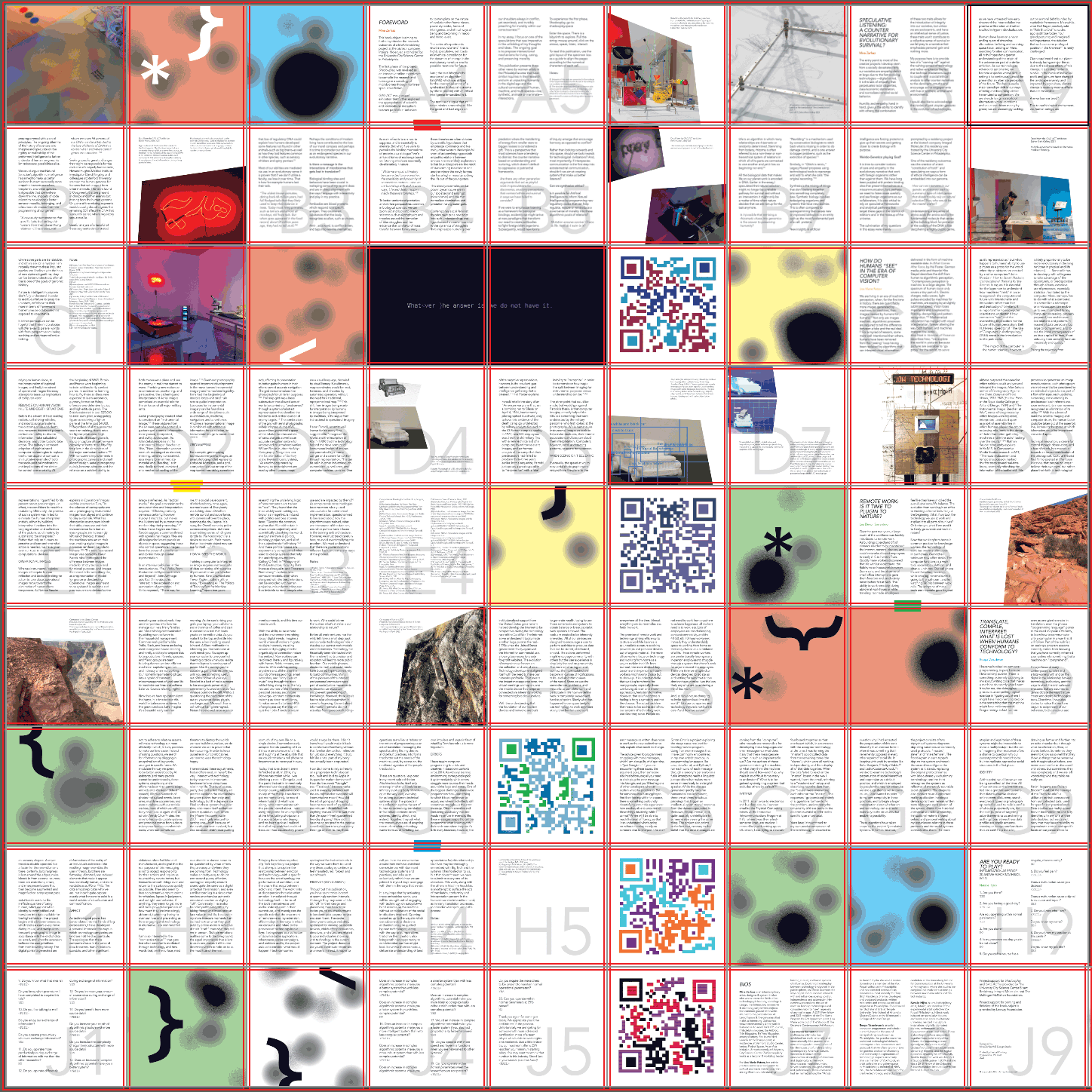









Mina Zarfsaz, More Than Human, 2023
This book-object is aiming to further synthesize the research outcomes of a BioArt residency project at the biotech company, Integral Molecular, and hosted by the University City Science Center in Philadelphia. Frameworks such as play, and discovery elicit treasure seeking impulses in this collection that also presents three other views by women artists in the Philadelphia area who have similar inquiries in their research and aim at unpacking humanity in the digital age and the cultural connotations of human, machine, and multi-species—live, synthetic, animate or inanimate— interactions.
To read this publication, one must use the grid layout of the specimen box as a guide to align the pages (single and not bound) according to the numerical characters of each cell. The goal was not to create a traditional book and allow the speculative, and interactive nature of the original experimentations to re-emerge in archiving and contextualizing this continued research. Embracing this novel form of content and form relationship for this book originates from the scientific method of archiving bits as collections.
The ongoing ambitions of the project are to inspire the spectators:
• to think about metaphor as an act of translation.
• to question the scientific act of translation: the translation of raw data into information and the translation of information into “facts.”
• to think about life as an algorithm: a series of interactions formed by relationships, wherein intelligence is formed by continual input.
• to consider chaos necessary for life: as the random seed in DNA that allows evolution; as the means necessary to upset cultural comfort and restructure outmoded social norms; and as the explosive counterforce to entropy in the galactic cycle of creation.
• to gaze from a distance, and consider the shift in perspective when reality is viewed from macro and micro scales.
To read this publication, one must use the grid layout of the specimen box as a guide to align the pages (single and not bound) according to the numerical characters of each cell. The goal was not to create a traditional book and allow the speculative, and interactive nature of the original experimentations to re-emerge in archiving and contextualizing this continued research. Embracing this novel form of content and form relationship for this book originates from the scientific method of archiving bits as collections.
The ongoing ambitions of the project are to inspire the spectators:
• to think about metaphor as an act of translation.
• to question the scientific act of translation: the translation of raw data into information and the translation of information into “facts.”
• to think about life as an algorithm: a series of interactions formed by relationships, wherein intelligence is formed by continual input.
• to consider chaos necessary for life: as the random seed in DNA that allows evolution; as the means necessary to upset cultural comfort and restructure outmoded social norms; and as the explosive counterforce to entropy in the galactic cycle of creation.
• to gaze from a distance, and consider the shift in perspective when reality is viewed from macro and micro scales.
This book was made possible by the support of a grant by the Leeway Foundation.
